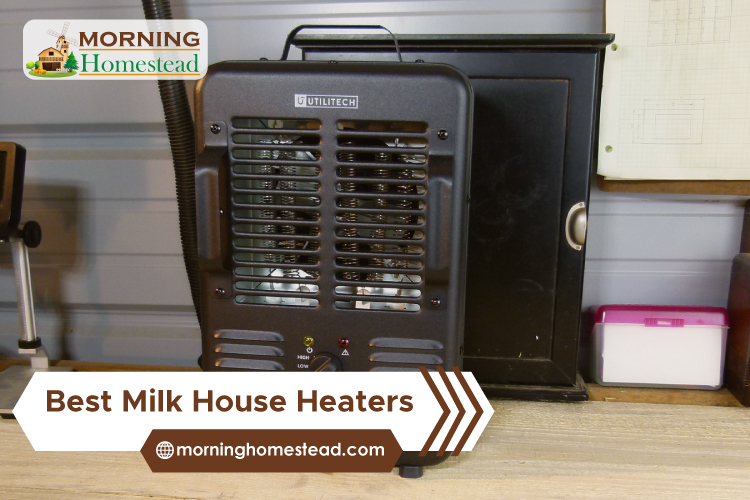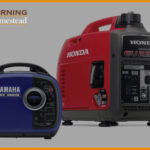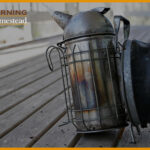Last Updated on June 20, 2023 by Georgie Smith
Depending on what part of the world you live in, at some point, the cold winter will arrive. Farmers can go indoors where there is a steady stream of warmth to help them get through the season. Livestock, on the other hand, has a barn to gather in for protection.
That will keep the animals out of the outdoor elements, but there is still the concern of freezing temperatures. With winter here, you are looking for ways to help your animals as well as help with heat in your home.
Rising fuel costs have many turning to portable space heaters help to push through the winter. Space heaters can help with warming the house, but how safe are they to use? Many homes have central heating, but that too is a hit to the wallet.
Space heaters can undoubtedly boost the frigid cold air to make the environment tolerable. These heaters you will find mostly in one room, such as an older adult’s room or the bathroom. Placing space heaters around helps with keeping the entire house warm.
Portable heaters are also the answer for when the family has company that needs warmer air to be comfortable. What exactly is a “milk house heater”? Although these items have been around for over fifty years, many have never heard of the name. Space heaters, of course, everyone knows what those are.
Basic Comparison:
SSL
Storage
Domains
Sub-domains
Homebasix LH872
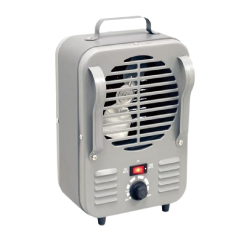
Brand - Homebasix
Portable
Electric
Light weight
Comfort Glow EUH352
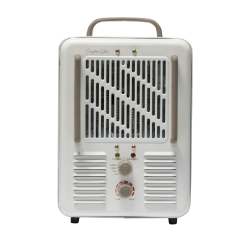
Comfort Glow
Color - White
Corded Electric
Forced Air
TPI Corporation 188TASA
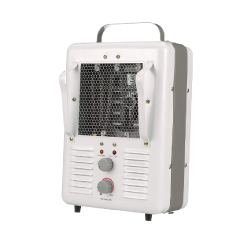
Brand - TPI
Overheat Protection
White/off-white
Cabinet
What the Heck is a Milk House Heater?
Yes, there really is an item, a Milk House Heater, and they have been on the scene for over fifty years. The original heater had the job of keeping the inside of dairy barns nice and warm in the winter months.
If your home is difficult to keep warm, then you know the barn where your livestock gather is even colder. Due to the infrastructure, the barn size, and other various scenarios, keeping the heat on around the barn is not always safe or cost-effective.
The purpose of this article is to educate the reader on how to keep livestock warm and what heaters will do the job. As you can imagine, with the amount of hay kept in a barn all it would take would be one spark for it all to burn to the ground.
Therefore, it is vital to use the best method of heat to prevent destruction. Keep reading to find the best milk house heater for you and your animals. [1]
The Following Are The Best Five Milk House Heaters That Are Safe While Also Being Effective:
Comfort Glow EUH352 Milkhouse Style Electric Heater 3-Prong Grounded Plug
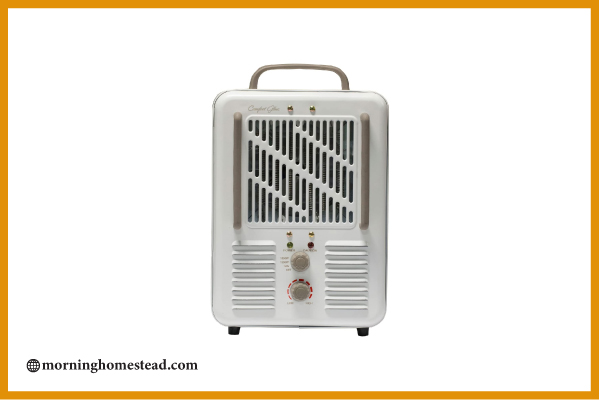
First on the list is the Comfort Glow Milkhouse Style Heater. This model has a 3-prong grounding plug and other built-in safety features. One feature is the fan-forced heat by electric instead of fuel.
The casing is a robust metal material that also houses tip-over guards, a carry handle, automatic thermostat, and dual power settings. Also, with this product is an accidental tip-over shut off feature to add to the quality and safety.
The power-on indicator light also assists with alerting the workers that the heater is still on and heating. The three-pronged power cord is grounded which is just one more step the maker added for electrical protection. The cord is six feet long, and the dimensions of the heater are 7 x 10.2 x 15.5 inches.
Shipping is free, and this item rates 4.1 stars with consumers noting it is low sound but efficient at heating a room. Be sure to read other consumers reviews by clicking here. You can also get more information about its use in both outdoor and indoor applications.
TPI Corporation 188TASA Fan Forced Portable Heater – Milk House Style Fan
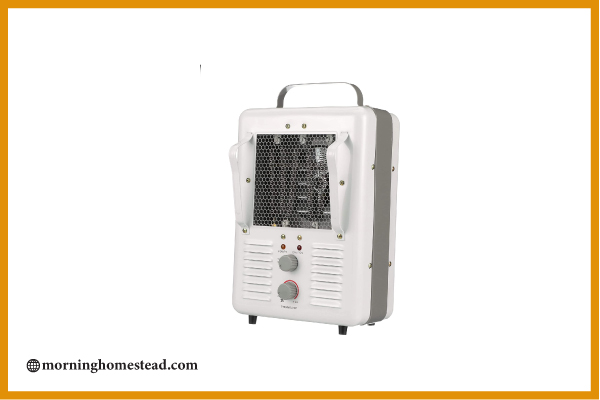
The second item is this TPI Corporation Milk House Style Fan. As with most electric heaters on today’s market, the heat is fan-forced. With this particular product, the equipment features a temperature control thermostat also with a triple safety system, including a tip-over switch.
The heater comes with an automatic reset limit type with a thermal cut-off device built inside. The portable heater is electric, lightweight, and simple to carry. For those reasons, consumers use an air circulator, heater, or dryer.
Portable heating equipment is ideal for travel purposes and is suitable for area heating, spot heating or freeze protection. Homeowners that have grow rooms to assist with gardening during the winter, alternate the heating source from time to time. Many homeowners use this type of heat to prevent their plumbing from freezing.
Other features are fast startup and quiet operation in an attractive design. Installation is a simple DIY for any room in the home. The heat is adjustable to prevent overheating. This particular model has a long lifespan with adjustable room temperatures.
If you are interested in this item, click here to go to the listing on Amazon. There you will find more information and the secure link to order yours today.
*Writers Note*
It is vital that you keep space heaters such as these clean. To do so, use a microfiber cloth, or a damp cloth, for removing dust buildup. Make sure the heater has had plenty of time to cool off before cleaning.
Space Heater, iSiLER 1500W Portable Indoor Heater, Ceramic Space Heater
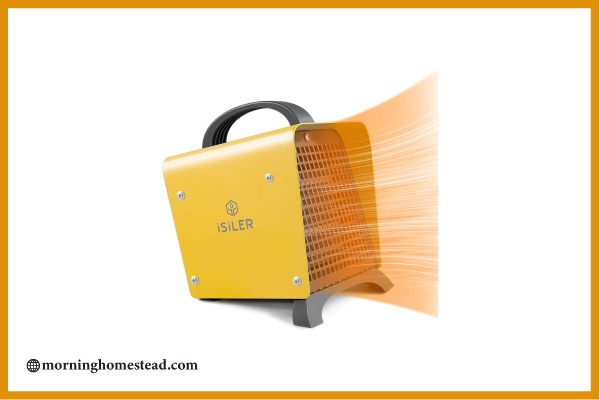
Not every indoor/outdoor heater that is portable carries the name “milk house heater,” but that does not mean one does more than the other. Actually, all portable heaters such as these can be a “milk house heater.”
This product, the iSiler portable indoor heater is ideal for warming a room in the home, or an area in the barn where there is fragile livestock. The fact that these heaters can go in any area is why many farmers utilize the ones that have additional safety features.
The heater itself is reliable as well as safe. The material used to manufacture this type of heater is fire-retardant. The heating elements are premium PTC ceramic that does not consume oxygen nor is there lights or flames. That alone establishes a more comfortable and healthy environment.
Some of the features of the ceramic space heater other than establishing a healthier and more comfortable environment are:
- Self-Regulating Element
- Automatic Overheating Protection
- Automatic Shut-Off when Temperatures Exceed the Limit
- Monitors for Safe Temperatures
- Adjustable Thermostat Control: Safe range of 41 °F-95 °F
- Distributes The Warm Air Evenly
- Portable, Convenient, and Compact with a Measurement of 6 inches x 6.7 inches x 7 inches and Weighs just 38.8 oz
This product scores a near perfect five stars from consumers such as yourself. To learn more about the heater and manufacturer, click here:
Homebasix LH872 Mini Milk House Heater, 750/1500-watt
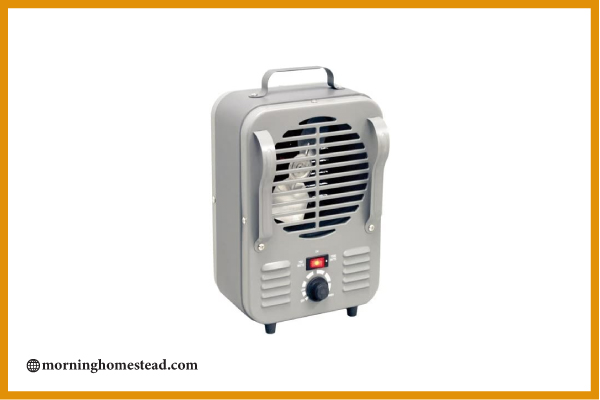
For the person that has small areas to warm, this Homebasix Mini Milkhouse Heater is the perfect fit. The setting of this item, 750/1500W is plenty. The heater has a carrying handle that is convenient and perfect to move from one room to the next.
For added protection, the heater has a tip-over shut-off with thermal overload protection. The material is a heavy metal construction to ensure a long-lasting lifespan. The dimensions are 12″ H x 7-3/4″ W x 6″ D.
If you have a room that just does get warm enough, this item is the perfect fit. Click here to see the actual product and order yours today.
Comfort Zone Milk-House Utility Heater
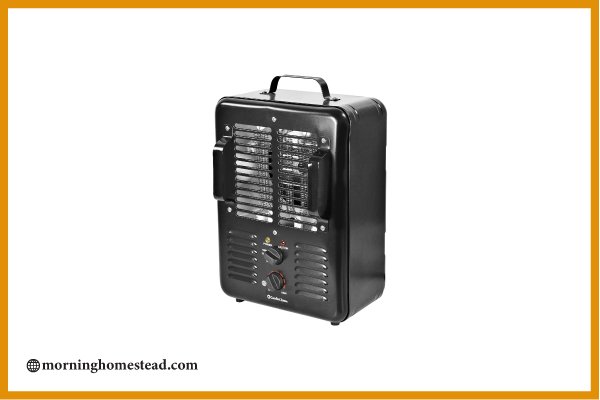
This last item, the Comfort Zone Milk-house Utility Heater is all you could ask for in a portable heater. It has a rugged appeal with all-metal housing making this the perfect solution to add warmth. Places, where you can use this type of heat, are a job site, office, garage, bathroom, or areas needing additional heat.
The thermostat is comfort controlled with high and low settings to enable your preference of how warm you want the room. The manual controls are simple to adjust so that you can maintain the comfort level you need at the time.
Also, the Patton manufacturer added for extra security the front guards to not only protect you but to protect the heater if it were to tip over. Having this added security provides added peace of mind to the individuals.
If you have an open area that just does not get warm enough, this is the perfect fix. The watt heat setting is 1000 and 1500 which makes it ideal for workrooms, basements, garages, and even areas where you have animals that need heat.
Almost all homes or offices have that one room that needs a boost with staying warm. For rooms such as this, this heater is a home run. The price is affordable, and as long as it is not damaged, you should get years of service. You can see the Patton Heater by clicking here along with reading more information about the company and the product.
There you have the five best sellers of Milk House Heaters on Amazon. Now, it is vital that you know as much as possible about heating your barn safely for livestock. The following are essential tips and details to help you and your animals have a safe and warm winter.
How to Safely Warm Your Barn for Livestock During Winter
Heating a barn where you have livestock is at times a necessity. Like all commercial and industrial spaces, your barn presents its unique requirements for heat. There are times when special considerations are necessary before you can choose the right heat source.
Due to typical sizes, purposes, infrastructure, and purpose, the source of heat that you have in your home are not usually proper or safe for barns.
Barn Heating 101
Before you start shopping for barn heaters, there are a few things you need to consider. The main detail is if your barn actually needs the added heat. If you do need an additional heating source, what areas need heat, and which do not?
Does Your Livestock Need Additional Heat?
If you find the answer is yes, keep in mind that when choosing a heat source for a barn it must be safe and healthy for your livestock. Many animals are resistant to the cold; therefore, if you make it too warm, it can be detrimental to their health.
There are, of course, exceptions that aid with determining whether an additional heat source is the best choice for you and your animals. First, consider what the average winter temperatures are in your region along with the needs of the livestock you have.
Most of the larger farm animals such as these do just fine in the cold:
- Mules
- Pigs
- Sheep
- Cows
- Horses
However, if you live in areas where the temperature often is below 30-35º F, you may want to add livestock-safe heaters such as the ones listed in this review. You will need to use this type of heat economically for times when severe cold weather arrives.
Your smaller farm animals such as these need a bit of help to keep warm:
- Dogs
- Chickens
- Cats
- Rabbits
You may also want to consider using a supplemental source for heat if the temperatures where you live go and stays below 40º F. If you find that the stalls are fine without the extra heat that does not necessarily mean all areas of the barn will be warm enough.
If any of your animals are sick or have an injury, they should always be sufficiently warm throughout the cold season. Knowing this, you should ensure that the area where you keep your animals that are ill, injured, or newborn, should never be too cold.
A heat option, as well as freshwater, should always be available even if that means adding heaters. Place one heater close to the water heater to prevent the water from freezing. You also need to watch very closely during the winter season to ensure your animals are not suffering from the cold or losing weight.
Weight loss in livestock during the winter is a sign of not only malnutrition but, that your animal is ill in some fashion. Also, it is also vital that you keep areas where your animals go in and out of the barn salted to prevent the ramps or entryways free from ice.
Icy areas are just as dangerous for cows and horses as for humans. One fall could cause severe injuries to your animals. Keeping ice at bay is a critical step to keeping your animals safe all winter.
FAQs:
Q: What are other means of keeping a barn warm?
A: The best thing to do that will ensure your animal’s safety is to be sure the barn is well insulated. By doing so, you are aiding with keeping the bitter wind, snow, hail, and ice from reaching your animals.
Q: What if the heater I have does not produce enough heat?
A: Before you invest money into ways to get your barn warm, you should first determine the size heater you need and what areas that will cover. Typically, a general contractor can help with this information.
To Sum It All Up
Knowing which of your livestock needs added heat is the first detail to analyze. You never want to make an area in the barn too hot because animals will suffer just the same as not having heat. Be sure you have a sound remedy before winter and do not wait until it is freezing, and it is too late for your animals.
How about you, do you have any input on the best milk house heaters? What about how to help new farmers with safe ways to warm their animals during the harsh winter? We would love to hear from you. Please leave us a message below, and we will get back to you soon.
While you are here, could you please “like and share” our work so that we can continue to help others? We thank you for your time.

